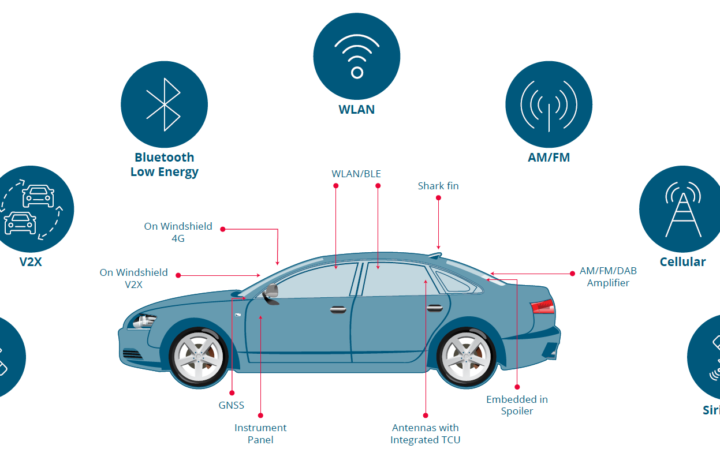Clearly, 2006 has been a year of many challenges. Fuel prices rose dramatically before abating somewhat, causing consumers to shift away from large sport utility vehicles and pickups—where the Detroit Three make most of their money. Interest rates rose, squeezing consumers further and also greatly increasing the cost of discounted financing and leasing deals for original equipment manufacturers (OEMs). And relentless competition and adjustment to new market realities led to devastating losses for the Detroit Three and resulted in a wave of supplier bankruptcies.
The best way to understand this tumultuous year in the industry is to separately explore the dynamics for OEMs and for suppliers.
OEM Dynamics
At the OEM level in North America, 2006 was a remarkably tough year for the Detroit Three. Ford recognized huge losses related to a painful structural adjustment of its business model, in addition to significant losses in its ongoing business, and brought onboard a new CEO. Chrysler suffered very large losses also, and speculation surfaced about whether DaimlerChrysler might sell the Chrysler unit. Finally, General Motors’ losses were significant, although much smaller than in 2005, as its cost-reduction efforts showed results and it successfully launched key new products—particularly the GMT 900 line.
Toyota and Honda, by contrast, continued to do very well, even in the extremely competitive North American market. Both companies gained share while continuing to enjoy strong profitability, with operating margins of about 7 percent for Honda and up to 10 percent for Toyota, according to Booz Allen’s analysis. Several of the other Japanese automakers also did well, and Korea’s Hyundai and Kea continued to strengthen their North American beachheads.
Certainly the Asian manufacturers benefited from the unanticipated shift to smaller vehicles caused by high gas prices, but there is much more to their gains and continued profitability compared to the struggles at the Detroit Three. Specifically, the Detroit Three suffer from three serious problems:
• Uncompetitive Cost
• Revenue Disadvantage
• Inferior Investment Economics
Uncompetitive Cost
High costs for the Detroit Three start with labor. Several factors, including generous United Auto Workers contracts, an aging labor force with expensive benefits, and shrinking volume that idles employees who must still be paid combine to increase cost far above that which transplants are paying
High cost also comes from a Detroit Three infrastructure that is sized to significantly larger businesses than they enjoy today or are likely to enjoy tomorrow. Another key cost disadvantage for the Detroit Three comes from sourcing methods. Although there are encouraging signs of progress, today’s sourcing models drive substantial late changes, rework, and inefficiency relative to the Toyota and Honda benchmarks. Because of a lack of trust and commitment in OEM-supplier relationships, suppliers are reluctant to make justified investments that they can recover only over a timeframe longer than the current contract. And because the focus is on price more than value and cost, the chance of picking the best possible component specification—the best possible tradeoff between consumer value and system cost—is much lower. Our analysis indicates that the total sourcing disadvantage faced by the Detroit Three is probably larger than the labor disadvantage.
In addition, high cost comes from relatively inefficient Detroit Three operations in other areas—for example, product development, which we will discuss in the “Inferior Investment Economics†section. Finally, some—but not all—people in the industry believe Asian producers enjoy a cost advantage because of undervalued currencies.
Revenue Disadvantage
Our research increasingly highlights that consumers are quite rational, and in the aggregate treat cars as capital goods. They are willing to pay for better perceived quality, reliability, and durability (QRD). But perceptions take time to adjust to experience: Although the Japanese brands achieved a significant quality advantage in the late 1970s and early 1980s the Japanese did not get paid fully for that advantage until about 1995
The time lag between Toyota and Honda achieving quality superiority and getting paid fully for it suggests that while the Detroit Three have made considerable advances in quality relative to the Japanese in the past five to 10 years, they may not be able to fully monetize the value of this improvement in quality for another five to 10 years without specific efforts to accelerate its capture. Exploring ways to accelerate this natural cycle clearly makes sense.
Inferior Investment Economics
Automotive OEMs make enormous investments in new products, hoping that those investments will earn high returns and, in aggregate, generate good returns on shareholder capital year after year. The Detroit Three, however, continue to have longer and more costly product development than leaders such as Toyota and Honda, although the gap is beginning to close. Furthermore, Detroit Three investment economics are worsened by the cost and revenue disadvantages already discussed.
Booz Allen research shows that the gap in investment returns is dramatic even when labor cost is roughly at parity. We have estimated investment returns across the product portfolios of GM, Ford, and Toyota, adjusting GM and Ford to take labor differences largely out of the equation. These estimates, while approximate, show dramatic differences in the aggregate investment productivity gap and in the huge discrepancies in returns by platform
Attacking these disadvantages continues to be at the top of the domestic OEMs’ agendas. As always, finding the exact solution is more difficult than diagnosing the problem; however, we would highlight three priorities:
1. Narrow the cost disadvantage
• Cut the best labor deal possible—Leverage buyouts to get the labor force to the right numbers and leverage the current difficult state of the business to get a more workable labor agreement in 2007.
• Rethink the supplier model—Realize that the historical approach does not generate either the highest value or the lowest system cost, and apply a more collaborative approach that does.
• Right-size the business—Recognize what “natural share†is for your company—it is probably below today’s shares, which are pushed up by the need to keep workers who are paid whether they produce or not. Adjust your company to that share, including plants, labor headcount, overhead headcount, and dealer networks.
• Achieve best-practice levels of efficiency in all areas—Include product development, dealer development, field management, and IT—taking into account offshoring or outsourcing activities to arbitrage labor-cost differentials.
2. Narrow the revenue disadvantage
• Continue to improve relative quality—Keep closing the gap.
• Communicate quality improvements to the marketplace—Focus on improvements as, for example, GM has done through warranty improvements.
• Create ways to monetize quality more quickly—Accelerate the natural adjustment of consumer attitudes.
• Continue to drive innovation in vehicle technologies and subsystems—Gain competitive advantage by, for example, two-mode hybrids.
• Close the gap fully—May require investment in managing the market for used vehicles.
3. Achieve superior investment economics
• Leverage cost and revenue improvements, as outlined above—Achieve acceptable investment economics across more of your portfolio.
• Improve the vehicle-development process itself, targeting timing, cost, and results—Improve investment economics to the level of industry leaders.
• Be ruthless about evaluating new programs fairly—Avoid unwarranted optimism.
• Be willing to re-examine some long-held policies, such as not paying CAFE fines—Consider eliminating those policies that are too costly.
Supplier Dynamics
The past year has been remarkably difficult for many suppliers as well. New bankruptcies of suppliers such as Dana and Dura add to the list of major bankruptcies in prior years, including Delphi, Tower Automotive, and Collins & Aikman. Even suppliers with a long track record of success have been squeezed, with profit margins for many of the most capable suppliers below the cost of capital.
Why has the year been so difficult for so many suppliers? We highlight two major issues:
• Unrecovered Commodity Cost Increases
• The Final Bankruptcy of the Historical Supplier-OEM Relationship
Unrecovered Commodity Cost Increases
We all know that prices for many key commodities—for example, steel, energy, and plastics—have risen dramatically in recent years, to levels far above those contemplated when many current programs were quoted. Many OEMs have been unwilling to give more than token price relief unless forced to by supplier distress, and the impact on supplier profitability has been enormous. Interestingly, both Toyota and Honda have been much more willing to work with their suppliers on commodity prices.
Final Bankruptcy of the Historical Supplier-OEM Relationship
For a long time, many suppliers successfully employed what might be called a “win the business and figure it out later†business model. In the 1990s, when business was being outsourced rapidly, almost any new piece of business was good business or could be turned into good business by the time the program launched. The theory was “you can’t make money on business you don’t have,†and it was very successful for many suppliers.
Today, the situation is very different. There is ruthless competition on most new bids, and winning a bid is a long way from winning a program that will earn a good return on shareholder capital, or even be profitable at all. The risks of taking on new programs have risen dramatically while potential rewards have fallen, requiring a much more cautious, program-by-program assessment of whether to take a program or pass.
There is also evidence of the bankruptcy of the traditional Detroit Three approach to sourcing, focused on price and compressing supplier margins, rather than on cost, creating value for the consumer, and generating profits for both the OEM and the supplier. The Detroit Three OEMs are finding it increasingly difficult to gain preferred access to innovative new developments from their suppliers, and for good reason. Both suppliers and OEMs are realizing that this traditional relationship needs to evolve, but only time will tell how quickly it will evolve and whether the evolution will be fast enough to improve supplier profitability and Detroit Three competitiveness.
What can suppliers do to address these challenges? Some of these issues will diminish over time—for example, commodities are likely to become a lesser issue as old programs quoted at low commodity costs are replaced by new programs quoted at levels at or close to current prices.
But the issue of the OEM-supplier relationship requires real change. We believe the most successful suppliers will develop new and more fruitful relationships with their customers, focused on generating value for consumers at the lowest possible cost for both the supplier and the OEM. We see strong interest in moving to this type of new relationship model on both sides.
Booz Allen’s Research Agenda
Booz Allen is focusing its research efforts on a set of issues closely related to the industry dynamics discussed above. These include:
• Revenue and Contribution Management—How to get more for less from the billions spent on sales and marketing investments and programs, and how to price to maximize short- and long-term profitability
• Monetizing QRD—How to accelerate the market’s realization of quality improvements to improve residuals
• Lean Distribution—How to use new business models, structures, and capabilities to drive improved economics for all types of OEMs
• Product Development Improvement—How others in the automotive industry can apply the lessons of the Toyota product-development system
• Next-Generation Sourcing Model—How to develop a new sourcing model for OEMs and suppliers that maximizes consumer value, minimizes system cost, and applies the lessons of the Toyota and Honda sourcing models
• Outsourcing and Offshoring—How to reduce cost through outsourcing and offshoring, for which functions and at what projected savings, and how to avoid common implementation pitfalls
• Manufacturing Efficiency—How to reduce manufacturing cost by choosing the right footprint and achieving maximum possible in-plant efficiency
• The 1 Percent IT Organization—How to achieve total IT costs of 1 percent of sales without sacrificing efficiency
• Organizational Effectiveness and Efficiency—How to create a high-performing organization at lowest possible overhead cost
Bram Bluestein, Senior Vice President, Booz Allen Hamilton














































 Automotive pensions and benefits, no - one size fits all approach - that can be applied globally
Automotive pensions and benefits, no - one size fits all approach - that can be applied globally



